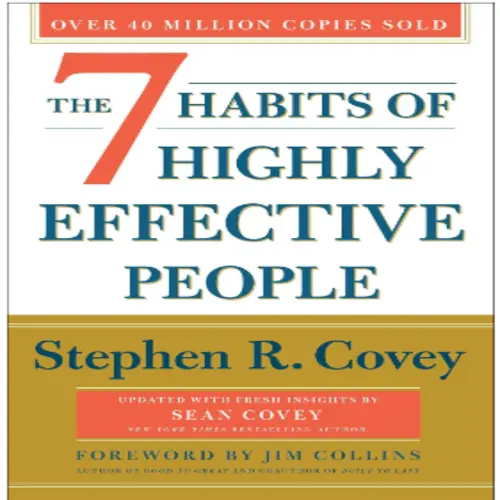Are you tired of trying to build habits that just don’t stick? You’re not alone! Discover proven habit building tips that actually work, empowering you to create lasting change in your life. Whether you want to exercise more, eat healthier, or boost your productivity, these strategies will set you up for success!
Understanding the Science of Habit Formation
Have you ever wondered why some habits stick while others fade away? Understanding the science behind habit formation can be your first step toward success.
The Habit Loop
Have you ever tried to develop a new habit only to find yourself slipping back into old patterns? You’re not alone! Many of us struggle with this. Let’s dive into the fascinating world of habits, starting with the habit loop, a concept that can truly change the way you approach personal growth.
The habit loop is composed of three simple yet powerful elements: cue, routine, and reward.
- Cue: This is the trigger that sets your habit in motion. It could be something external, like your phone buzzing, or something internal, like feeling stressed. Think about your daily life: what cues do you encounter? Maybe it’s the smell of coffee in the morning that prompts you to reach for that first cup.
- Routine: This is the behavior you engage in after the cue. It’s the action you take—be it healthy or unhealthy. For instance, if your cue is stress, your routine might be grabbing a snack or scrolling through social media to unwind.
- Reward: The final piece of the puzzle is the reward, which reinforces your routine. This could be the satisfaction of a sweet treat or the escape from reality that comes with browsing the internet. Over time, your brain learns to associate the cue with the reward, solidifying the habit.
Think about a habit you want to change. What’s your cue? What routine do you follow? And what reward do you get? By breaking down your habits this way, you can start to see where changes can be made.
The Role of Environment in Habit Building
The spaces we inhabit greatly influence our behaviors. Consider your home or workspace. Are they cluttered with distractions, or are they conducive to your goals? The environment can either support or sabotage your habit formation. Here are some questions to reflect on:
- Is your kitchen stocked with healthy snacks, or do you find yourself surrounded by junk food?
- Do you have a dedicated space for exercising, or is your gym equipment gathering dust in the corner?
Here are some practical strategies to optimize your environment for habit building:
- Designate Spaces: Create specific areas for certain activities. A cozy reading nook can encourage you to dive into books, while a clean workspace can boost productivity.
- Reduce Friction: Make it easier to engage in good habits. If you want to drink more water, keep a bottle at your desk. Want to read more? Keep books within arm’s reach.
- Visual Reminders: Use sticky notes or visual cues to remind you of your goals. A simple note on your fridge can encourage you to choose healthier options.
- Surround Yourself with Support: Engage with people who inspire you and support your goals. Join groups or communities that share your interests, and watch how your habits transform with the right encouragement.
Conclusion
So, how do you take this knowledge and apply it to your life? Start by identifying one habit you want to change. Break it down into the habit loop: find your cue, routine, and reward. Then, take a good look at your environment. What changes can you make to support your new habit?
Remember, building habits isn’t about perfection; it’s about progress. Every small change counts! As author James Clear says, “You do not rise to the level of your goals. You fall to the level of your systems.”
Reflect on your journey. What small steps can you take today to create a healthier, more supportive environment? Embrace the journey of habit building, and watch as your life begins to transform, one habit at a time.
Practical Tips for Building Good Habits
Have you ever found yourself saying, “I really want to develop this new habit,” only to get lost in the chaos of everyday life? You’re not alone! Building good habits can feel daunting, but it doesn’t have to be. With the right strategies, you can create lasting changes that fit seamlessly into your life. Let’s explore some practical tips that can help you take those crucial steps toward your goals.
Start Small: The 2-Minute Rule
One of the biggest hurdles in habit formation is feeling overwhelmed by the idea of making significant changes. This is where the 2-Minute Rule comes in. The concept is simple: when you want to start a new habit, make it so easy that you can do it in just two minutes.
For example, if your goal is to read more, start by reading just one page a day. If you want to exercise regularly, commit to doing just two minutes of stretching.
I remember when I wanted to get back into running. Instead of telling myself I needed to run five miles right away, I simply put on my shoes and jogged down the block. That two-minute run quickly turned into a 20-minute jog. Starting small not only makes the task manageable but also builds your confidence.
Here are few actionable steps you can take:
- Identify a habit you want to develop.
- Break it down into a two-minute version.
- Commit to doing it daily for a week and see how it feels!
Use Habit Stacking
Have you ever noticed how certain routines naturally follow one another? This is where habit stacking comes into play. It involves linking a new habit to an existing one, making it easier to remember and perform.
For example, if you already brush your teeth every morning, you can stack a new habit, like doing two minutes of meditation, right after. The key is to find a habit that feels like a natural fit.
When I started drinking more water, I linked it to my morning coffee routine. After I brewed my coffee, I made it a point to drink a glass of water first. It became an easy transition and helped me stay hydrated throughout the day.
Here are few actionable steps you can take:
- List your current habits.
- Choose one and think of a new habit you can stack onto it.
- Start small and practice this new combination daily.
Keep Yourself Accountable
Accountability can be a game-changer when it comes to building good habits. Having someone to share your goals with creates a sense of commitment and encouragement. Whether it’s a friend, family member, or a support group, sharing your journey can provide motivation when you need it most.
I once joined a walking group to help motivate myself to stay active. Knowing that my friends were counting on me to show up made all the difference. Plus, it turned our walks into a fun social event!
Here are few actionable steps you can take:
- Share your goals with someone you trust.
- Consider joining a group or finding an accountability partner.
- Regularly check in with each other on progress and celebrate small victories!
Conclusion
Building good habits is a journey, not a race. By starting small, using habit stacking, and holding yourself accountable, you create a strong foundation for lasting change. Remember, every little step counts!
Reflect on the changes you want to make and consider how you can implement these practical strategies in your life. You have the power to transform your habits, and it all starts with a single step. So, what will your first step be? Embrace the journey, and watch how these small actions lead to significant results!
Tools and Techniques for Habit Tracking
Have you ever set a goal to build a new habit, only to find yourself lost in the process a few weeks later? You’re not alone! Tracking your habits can be the secret sauce to making sure you stay on course. With the right tools and techniques, you can transform your intentions into lasting actions. Let’s explore some effective ways to track your habits and keep your motivation alive.
Digital vs. Analog: What Works Best?
In today’s world, we have a myriad of options when it comes to tracking habits. You might wonder: should you go digital with apps, or stick to the good old-fashioned pen and paper? The answer really depends on what resonates with you.
Digital Tools: There are countless apps designed for habit tracking, like Habitica, Todoist, or Streaks. I personally found Habitica incredibly motivating because it turns habit tracking into a game. Every time I check off a task, I earn points for my character. It adds a fun element and keeps me engaged!
Analog Tools: On the other hand, using a journal or a simple calendar can be just as effective. Some people find that physically writing down their habits helps reinforce their commitment. I remember starting a habit journal, where I not only tracked my daily water intake but also reflected on how I felt. This deeper connection helped me understand my progress in a meaningful way.
Here are actionable steps you can take:
- Try out a couple of habit-tracking apps and see which one feels right for you.
- If you prefer writing, grab a notebook and create a dedicated habit journal.
- Experiment for a week with both methods and determine which one helps you stay motivated.
The Power of Visual Reminders
We all know that life can get busy, and it’s easy to forget about our goals amidst the chaos. This is where visual reminders come into play. They serve as cues that can help reinforce your habits throughout the day.
Think about it: how many times have you seen a motivational quote or image that sparked a feeling of determination? I once put sticky notes around my workspace with reminders like “Drink water” and “Take a break.” Each time I saw them, it reignited my focus and commitment.
You can also use calendars, vision boards, or even your phone’s wallpaper as a visual cue. The key is to make these reminders prominent and personal.
Here are actionable steps you can take:
- Create visual reminders that resonate with your goals. Use quotes, images, or symbols.
- Place them in locations you frequent—like your bathroom mirror, fridge, or workspace.
- Change them up periodically to keep your motivation fresh and exciting.
Regular Reflection and Adjustment
Tracking your habits is not just about keeping a record; it’s also about evaluating and tweaking your approach. Regular reflection can help you understand what’s working and what needs adjusting.
For instance, I set a goal to meditate daily, but I found that my evening sessions often got pushed aside. After a few weeks, I reflected on this and decided to switch to morning meditations instead. This simple adjustment made a world of difference, allowing me to build consistency.
Research shows that reflecting on your progress can significantly boost your chances of success. Take the time to evaluate your habits weekly or monthly. Ask yourself: What’s working? What’s not? How can I adjust to make it easier?
Here are actionable steps you can take:
- Schedule a weekly or monthly reflection session to review your habit progress.
- Ask yourself key questions to evaluate your strategies.
- Be open to making changes based on your reflections, don’t be afraid to experiment!
Conclusion
racking your habits is an empowering journey that can lead to lasting change. Whether you choose digital or analog methods, utilize visual reminders, or commit to regular reflection, the key is to find what works best for you.
Remember, the road to building good habits is not always smooth, but with the right tools and techniques, you can navigate the bumps along the way. So, what will you do today to track your habits more effectively? Embrace these strategies, and watch how they transform your goals into achievements!
Overcoming Obstacles in Habit Formation
Have you ever felt like you were on the brink of success, only to stumble back into old habits? It’s frustrating, isn’t it? You’re not alone in this struggle! Many of us face obstacles in habit formation, but the good news is that with the right strategies, we can overcome them. Let’s explore how to tackle these challenges head-on and turn your intentions into lasting habits.
Identifying Triggers for Bad Habits
Understanding the triggers behind your bad habits is the first step toward change. What situations or feelings prompt you to reach for that snack or scroll through social media instead of focusing on your goals?
For example, I realized that my late-night snacking was often triggered by boredom while binge-watching my favorite shows. The moment I recognized this pattern, I began to think more critically about my habits.
Here are actionable steps you can take:
- Keep a journal to track when you fall into old habits. Write down the time, situation, and feelings you experienced.
- Look for patterns in your behavior. Are there specific triggers you can identify?
- Once you know your triggers, brainstorm alternative actions you can take when they arise.
Creating a Supportive Environment
Your environment plays a massive role in shaping your habits. A cluttered, distracting space can lead you back to old behaviors, while a supportive environment can help foster positive habits.
When I decided to work on my fitness goals, I transformed my living room into a workout space. I cleared out the clutter, laid down a yoga mat, and put my weights where I could see them. This simple change made it much easier to choose exercise over couch time.
Here are actionable steps you can take:
- Assess your environment. What can you remove or adjust to reduce distractions?
- Create dedicated spaces for your positive habits, whether it’s a reading nook or a workspace.
- Use visual cues to remind you of your goals. A simple poster with your fitness goals or a bowl of fruit on the kitchen counter can make a big difference.
Dealing with Setbacks
Setbacks are a natural part of any journey, especially when it comes to habit formation. Instead of viewing failure as a negative, embrace it as an opportunity for growth.
I remember missing my workout routine for a week during a busy period at work. At first, I felt defeated, but I used that experience to reevaluate my schedule. I learned to prioritize my health by setting smaller, achievable goals that fit into my lifestyle.
Research shows that resilience—the ability to bounce back from setbacks—is crucial for long-term success. Embracing failure allows you to adjust your approach rather than give up entirely.
Here are actionable steps you can take:
- When you face a setback, take a moment to reflect on what happened. What were the circumstances? How can you adapt?
- Remind yourself that setbacks don’t define your journey; they are simply bumps in the road. Write down a positive affirmation to counter negative self-talk.
- Set mini-goals for your next steps, focusing on progress rather than perfection.
Conclusion
Overcoming obstacles in habit formation is a journey filled with ups and downs. By identifying your triggers, creating a supportive environment, and embracing setbacks as opportunities for growth, you can transform your habits and achieve your goals.
Remember, it’s not about perfection; it’s about persistence. Each small step you take brings you closer to your desired habits. So, what will you focus on today? Embrace these strategies, and let’s turn those challenges into stepping stones toward your success!
Advanced Strategies for Lasting Change
Have you ever felt stuck in a cycle of trying to change your habits but ending up right back where you started? It’s frustrating, isn’t it? The truth is, lasting change often requires more than just willpower; it involves a deeper understanding of your mindset and techniques to keep you motivated. Let’s explore some advanced strategies that can help you create meaningful, lasting change in your life.
The Role of Mindset in Habit Formation
One of the most powerful influences on your ability to form and maintain habits is your mindset. Carol Dweck, a psychologist at Stanford University, introduced the concepts of the fixed mindset and growth mindset.
Fixed Mindset: Believing your abilities and intelligence are static. If you struggle to stick with a new habit, you might think, “I just can’t do this.”
Growth Mindset: Embracing the idea that you can develop your abilities through effort and learning. With this mindset, setbacks become opportunities to grow. For example, when I struggled to maintain my morning workout routine, I shifted my perspective. Instead of seeing myself as someone who couldn’t be consistent, I viewed it as a chance to learn what time of day worked best for me.
Here are actionable steps you can take:
- Reflect on your current mindset. Do you lean more toward fixed or growth?
- Challenge negative thoughts by asking yourself how you can learn from setbacks.
- Cultivate a growth mindset by celebrating small victories, no matter how minor they seem.
Visualization Techniques
Visualization isn’t just for athletes; it’s a powerful tool anyone can use to enhance commitment to their goals. By mentally picturing yourself successfully engaging in a habit, you can strengthen your resolve.
I remember preparing for a big presentation at work. Instead of just rehearsing my speech, I took time to visualize myself confidently presenting, engaging with the audience, and receiving positive feedback. This mental imagery not only calmed my nerves but also helped me perform better.
Research shows that visualization can create neural patterns in your brain similar to actual practice. This means your brain can start to associate your habit with positive outcomes, making it easier to follow through.
Here are actionable steps you can take:
- Spend a few minutes each day visualizing yourself successfully performing your desired habit.
- Make it as vivid as possible: What do you see, hear, and feel during this visualization?
- Write down your visualizations to reinforce your commitment and track your progress.
Reward Systems for Motivation
Creating a reward system is a fantastic way to reinforce positive behavior and keep you motivated. The key is to choose rewards that resonate with you and genuinely feel rewarding.
When I began my journey to eat healthier, I set up a small reward system for myself. For every week I met my goals, I allowed myself to indulge in a special treat—whether it was a movie night or a new book. This not only kept me motivated but also made me look forward to my progress.
Studies have shown that rewards can trigger the release of dopamine, a neurotransmitter that plays a role in pleasure and motivation. This means that when you reward yourself for sticking to your habits, you’re reinforcing the behavior in a powerful way.
Here are actionable steps you can take:
- Identify rewards that excite you and make a list.
- Tie these rewards to specific milestones in your habit formation journey.
- Ensure that your rewards are healthy and support your overall goals.
Conclusion
Creating lasting change in your life is a journey that involves more than just surface-level habits. By understanding the role of your mindset, utilizing visualization techniques, and implementing a reward system, you can set yourself up for success.
Remember, it’s about progress, not perfection. Embrace a growth mindset, visualize your success, and reward yourself for every step you take toward your goals. What strategies will you implement today to create lasting change? Embrace these advanced strategies, and watch how they transform your journey!
Recommended Books and Materials
Atomic Habits

No matter your goals, Atomic Habits offers a proven framework for improving – every day. James Clear, one of the world’s leading experts on habit formation, reveals practical strategies that will teach you exactly how to form good habits, break bad ones, and master the tiny behaviors that lead to remarkable results.
The Miracle Morning Journal

The Miracle Morning JOURNAL, authored by Hal Elrod, is your essential tool for elevating your Morning practice. It’s designed to enhance your morning routine and support your journey towards personal growth and transformation. Discover how this journal can help you achieve your goals and unlock your potential!
The 7 Habits of Highly Effective People

The 7 Habits of Highly Effective People is one of the most inspiring books ever written, captivating readers for nearly three decades. Transforming lives from presidents to parents, this 30th anniversary edition celebrates the timeless wisdom of the 7 Habits, featuring modern insights from Sean Covey.
Intelligent Change The Five Minute Journal

Cultivating gratitude and mindfulness, the 5 Minute Journal encourages you to appreciate your life for just five minutes each day. Designed for both men and women, this journal fosters positive manifestation and boosts confidence, helping you start your day with a more positive mindset and a greater sense of fulfillment.
Summary
We explored the science behind habits, providing you with the tools and strategies needed to make lasting changes in your life. From understanding the habit loop: comprising cue, routine, and reward to recognizing the crucial role your environment plays, this guide offers practical advice that sets the foundation for effective habit formation. You’ll discover actionable techniques such as the 2-Minute Rule for starting small, habit stacking to leverage existing routines, and the importance of accountability through social support.
Tracking your progress with the right tools, whether digital apps or traditional journals, can be a game-changer. We also discuss overcoming common obstacles like identifying triggers for bad habits and creating a supportive environment for growth. Lastly, we delve into advanced strategies such as cultivating a growth mindset, using visualization techniques, and implementing reward systems to sustain your newfound habits.




